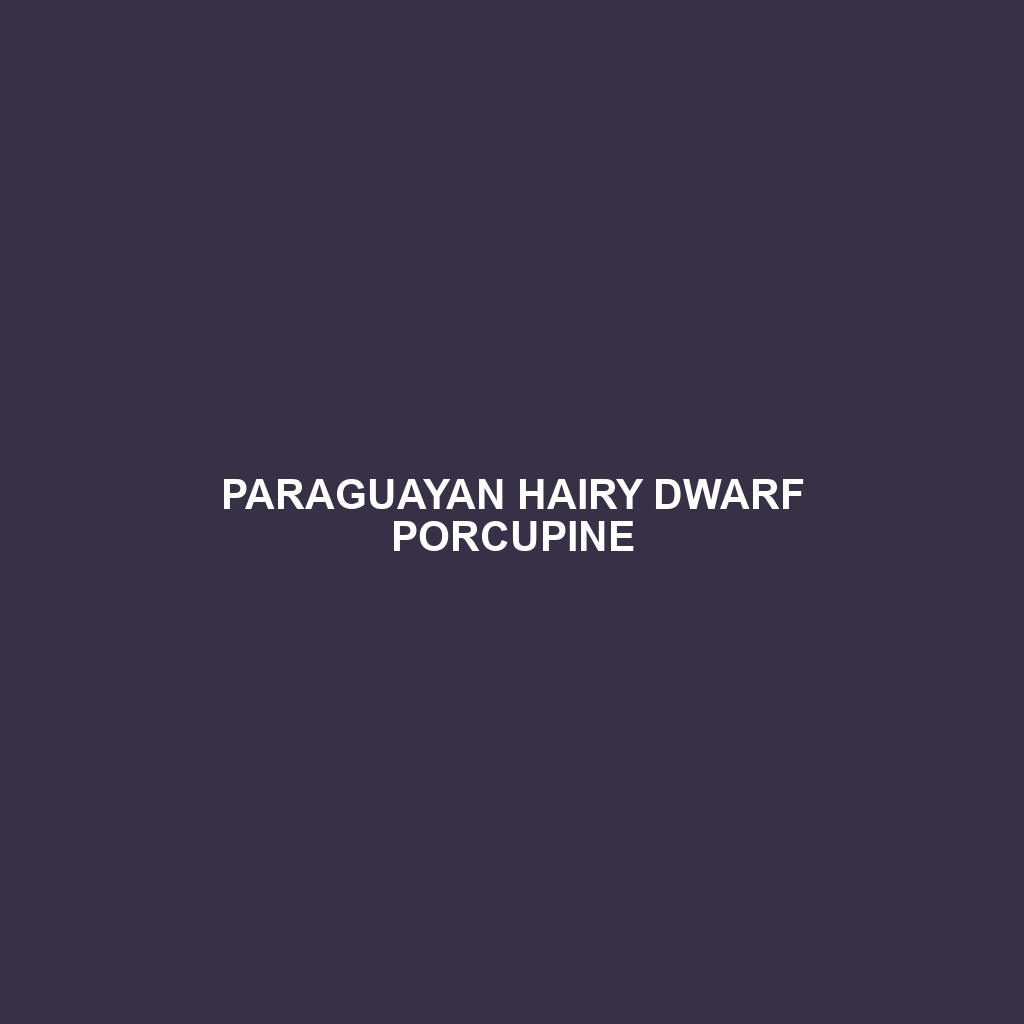Paraguayan Hairy Dwarf Porcupine
Common Name: Paraguayan Hairy Dwarf Porcupine
Scientific Name: Coendou vestitus
Habitat: The Paraguayan Hairy Dwarf Porcupine is primarily found in the forests of Paraguay, particularly in the Atlantic Forest and its adjacent areas. These small, nocturnal creatures thrive in dense, humid environments, often residing in trees or the underbrush of tropical rainforests. Their range extends to parts of Brazil and Argentina, where they inhabit similar wooded locales.
Physical Characteristics: Adult Paraguayan Hairy Dwarf Porcupines typically weigh between 2.5 to 4.5 kg and measure around 30 to 60 cm in length. Their distinctive features include a dense coat of fur combined with quills, which vary in color from dark brown to black with lighter underparts. The stout body, short legs, and bushy tail help them navigate through their arboreal habitat effectively. Their unique appearance, marked by a round face and small, rounded ears, makes them an enchanting species to observe.
Behavior: These porcupines are primarily nocturnal, foraging at night for food. They exhibit solitary behavior, though they may occasionally be seen in pairs, particularly during mating season. Their tree-climbing skills are remarkable, allowing them to evade predators and access their diet of leaves, fruits, and flowers. Additionally, they use their strong claws to grasp branches, adding to their agile presence in the canopy.
Diet: The Paraguayan Hairy Dwarf Porcupine is herbivorous, feeding mainly on bark, leaves, fruits, and flowers. Their preference for tender foliage makes them important contributors to their ecosystem, aiding in seed dispersal and plant regeneration. They have adapted their molar teeth to help efficiently grind tough plant material, which significantly influences their feeding habits and dietary choices.
Reproduction: Reproduction occurs throughout the year, with a peak in breeding seasons during the rainy months. The female typically gives birth to a single offspring after a gestation period of about 112 days. The young are born fully furred and capable of climbing shortly after birth, showcasing their immediate adaptation to life in the trees. Parental care is predominantly provided by the mother, who protects and nurtures the young until they are independent.
Conservation Status: The Paraguayan Hairy Dwarf Porcupine is currently listed as “Vulnerable” on the IUCN Red List. Threats to their population include habitat loss due to deforestation and hunting, which have led to a steady decline in numbers. Conservation efforts aimed at habitat preservation are crucial for their survival.
Interesting Facts: One intriguing aspect of the Paraguayan Hairy Dwarf Porcupine is its unique defense mechanism; when threatened, it can roll into a tight ball, using its sharp quills to deter predators. Additionally, they can make various vocalizations, including hissing and growling, to communicate distress or signal danger.
Role in Ecosystem: As a key species within their ecosystem, Paraguayan Hairy Dwarf Porcupines contribute to the health of their environment by facilitating plant growth through their feeding habits. Their role in seed dispersal is vital for maintaining the biodiversity of their forest habitats, supporting both flora and fauna alike. Their presence is indicative of a balanced ecosystem, highlighting the need for ongoing conservation efforts to protect this unique species and its habitat.
